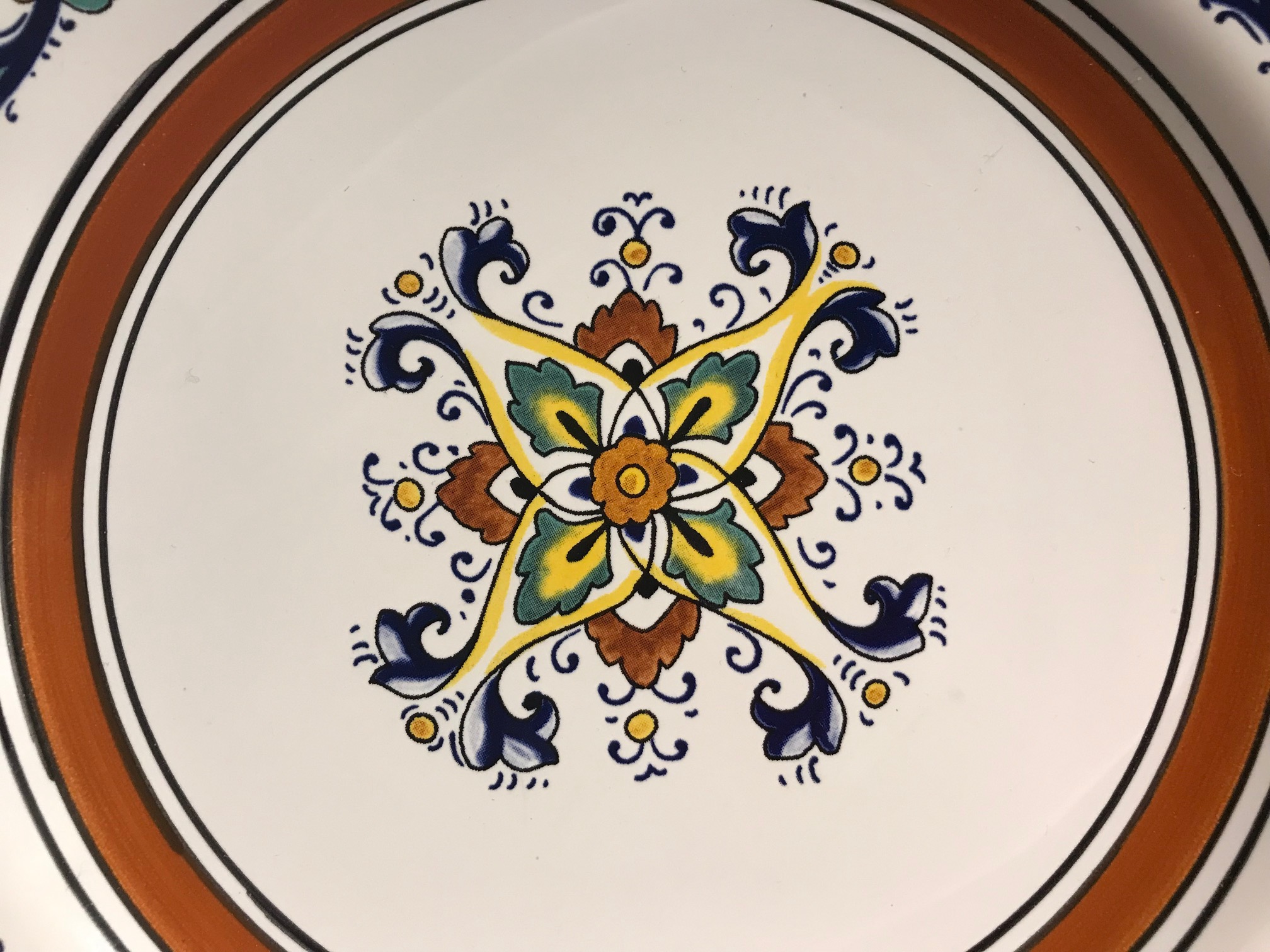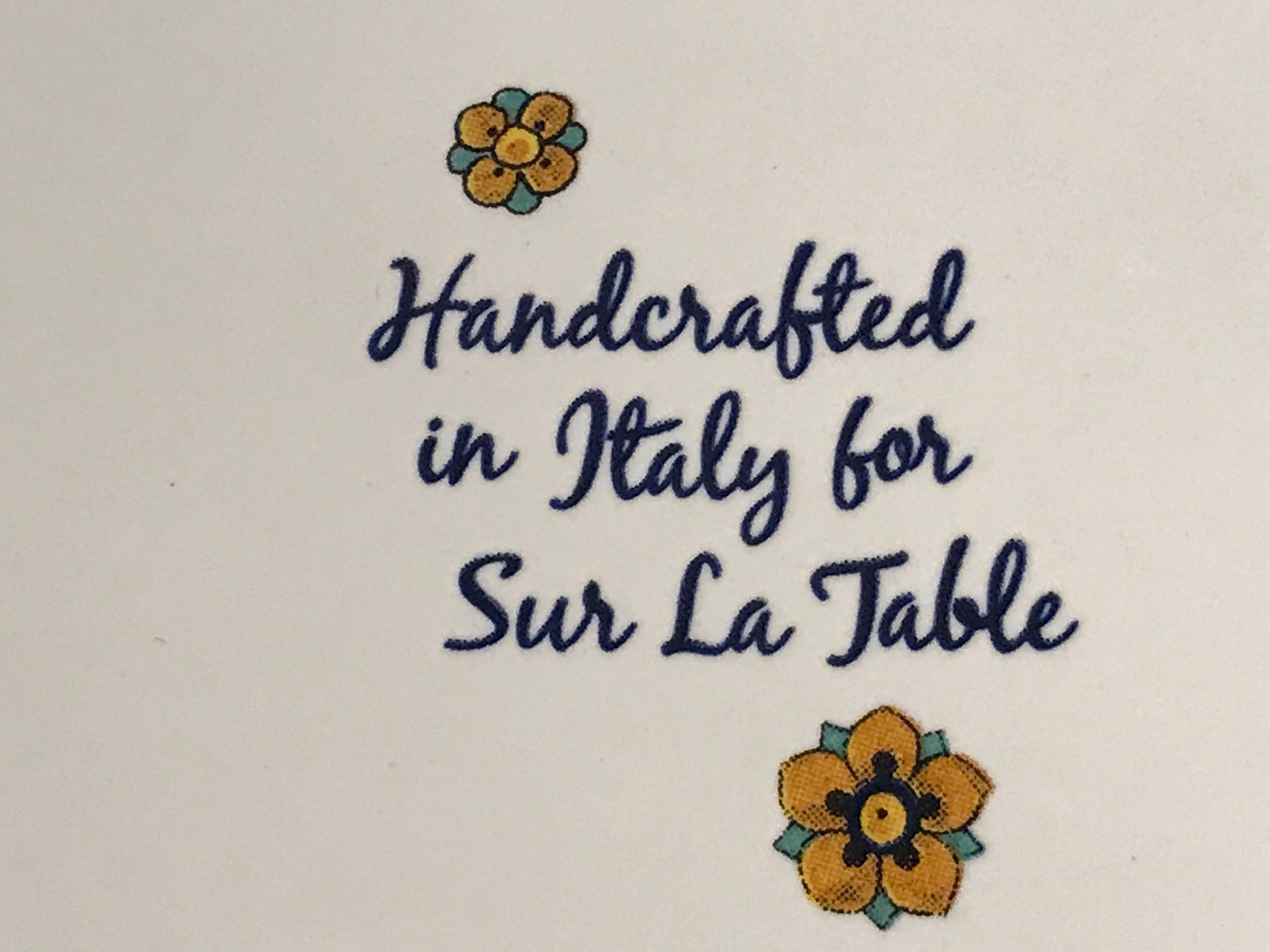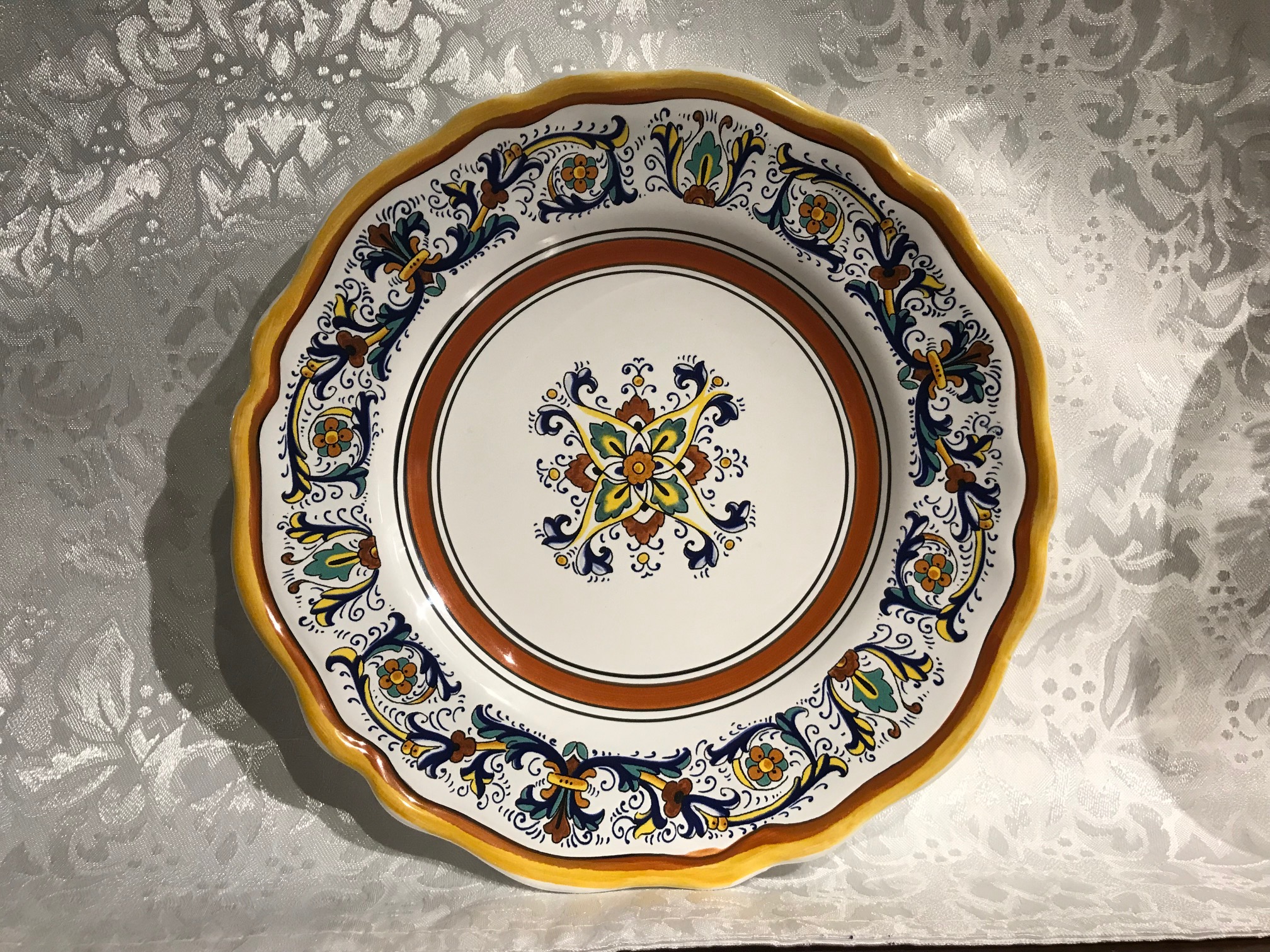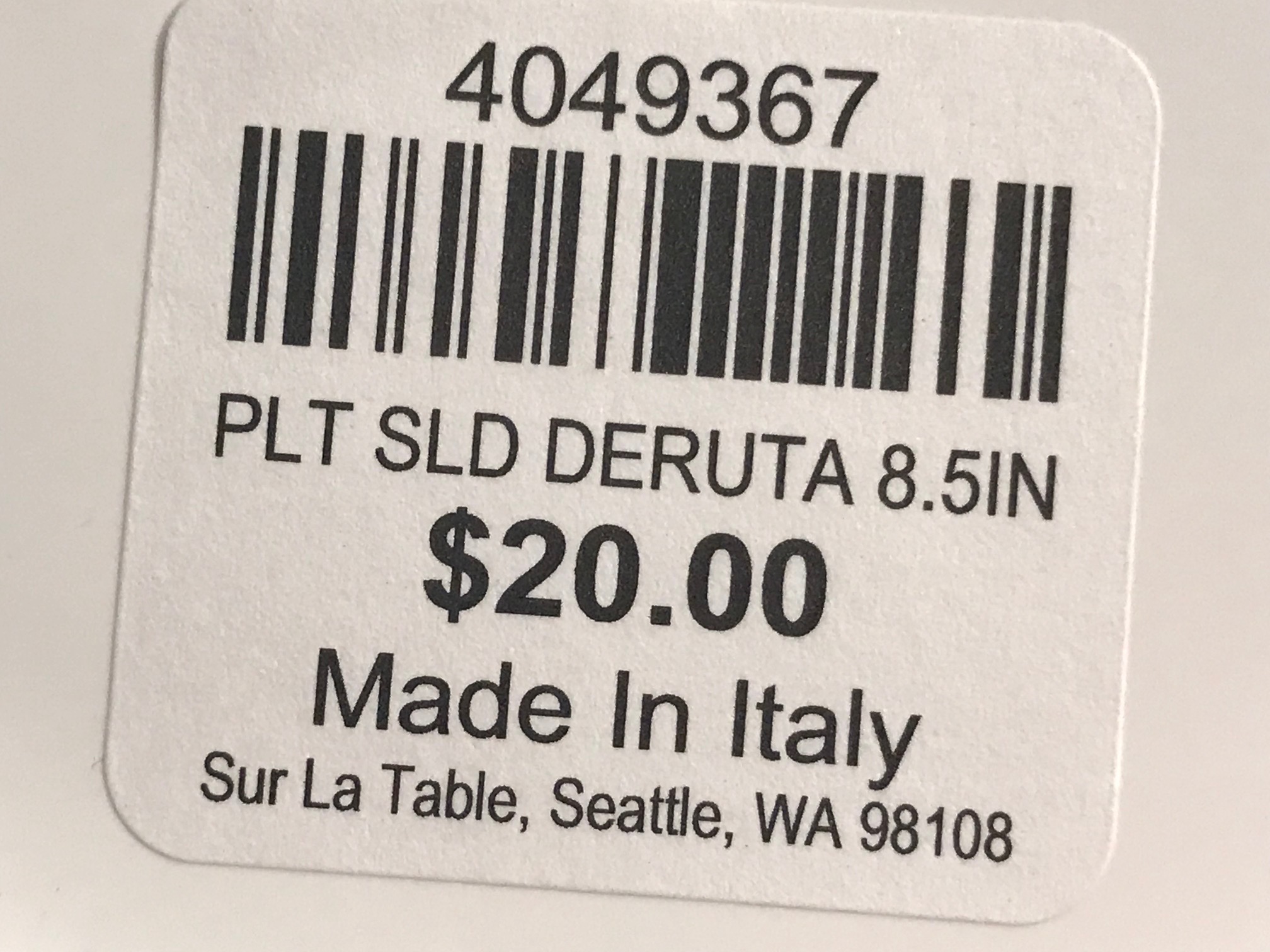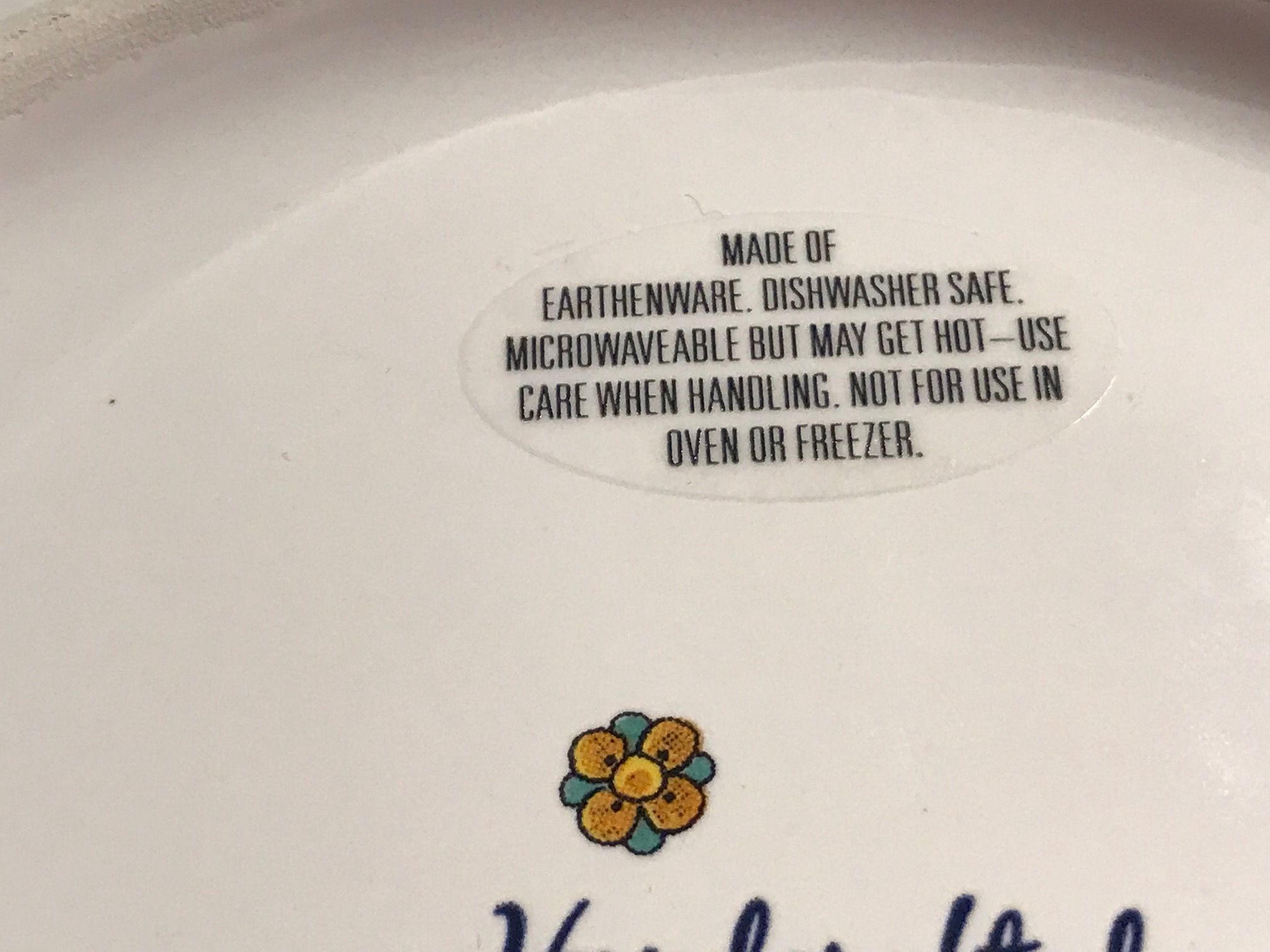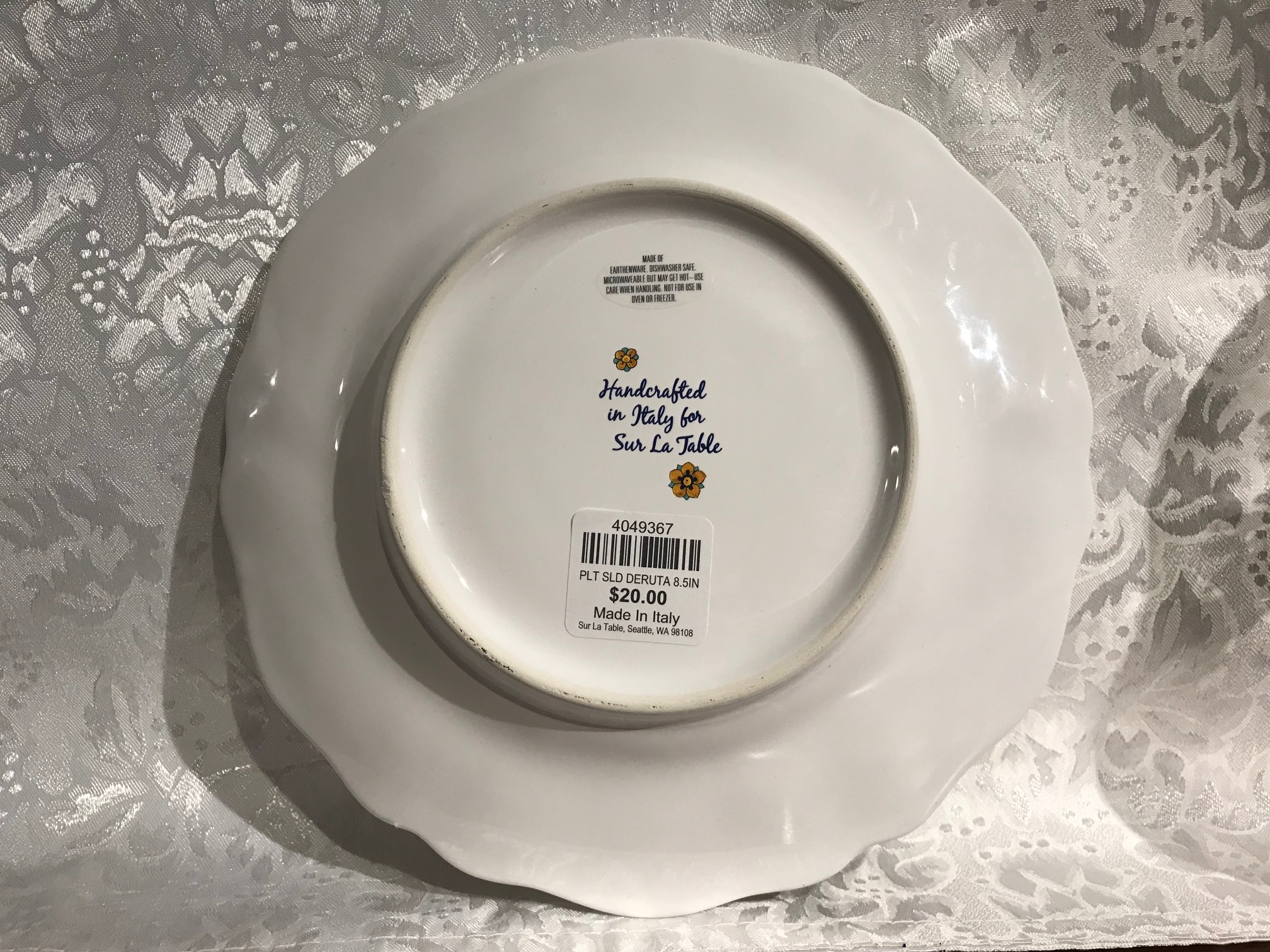Available as of December 2019, at Sur La Table — Deruta Italian salad plate: 16,100 ppm Lead (90 is unsafe for kids)
For those new to this website:
Tamara Rubin is a multiple-federal-award-winning independent advocate for childhood Lead poisoning prevention and consumer goods safety, and a documentary filmmaker. She is also a mother of Lead-poisoned children (two of her sons were acutely Lead-poisoned in 2005). Since 2009, Tamara has been using XRF technology (a scientific method used by the U.S. Consumer Product Safety Commission) to test consumer goods for toxicants (specifically heavy metals — including Lead, Cadmium, Mercury, Antimony, and Arsenic). All test results reported on this website are science-based, accurate, and replicable. Items are tested multiple times to confirm the test results for each component tested. Tamara’s work was featured in Consumer Reports Magazine in February of 2023 (March 2023 print edition).
Published December 7, 2019
The headline reads “16,100 ppm Lead …” is that a problem?
The restriction for total Lead content in an item “intended for use by children” is anything 90 ppm Lead (or higher) in the paint, glaze, or coating. Whether or not this item is explicitly “sold for use by children,” families are buying these decorative hand crafted Italian plates with the intention of using them to serve the whole family — including children. I can imagine that many families purchasing this design this holiday season are planning on using them as their daily dinnerware.
This is current (December 2019) Sur La Table branded product. It should be illegal today — but it simply is not.
Sur La Table consistently has Lead in many of their newly-manufactured dishware choices — especially ceramic products made in Portugal, Italy, or other countries known for hand-made, hand-painted ceramics. Please do not purchase any items from this store until they take a public stand to create Lead-free dishes and other non-toxic products across the board. Their impact goes far beyond the products they produce and sell with their branding. They are big enough that they, through the choices they make, help to set industry standards — and other companies follow their (bad) example. We need this to change. It’s almost 2020 for Pete’s sake; there simply should not be ANY LEAD in ANY of our food-use consumer products (dishes or other kitchenware).
Below are the full XRF test results for the dish pictured in this piece.
Yellow/brown flower in the center of the dish’s food-surface:
- Lead (Pb): 16,100 +/- 600 ppm
- Cadmium (Cd): 82 +/- 21 ppm
- Barium (Ba): 2,828 +/- 232 ppm
- Chromium (Cr): 6,891 +/- 341 ppm
- Antimony (Sb): 1,054 +/- 87 ppm
- Tin (Sn): 162 +/- 40 ppm
- Zinc (Zn): 26,200 +/- 1,000 ppm
- Copper (Cu): 517 +/- 95 ppm
- Nickel (Ni): 686 +/- 147 ppm
- Iron (Fe): 9,098 +/- 620 ppm
- Vanadium (V): 1,034 +/- 103 ppm
- Titanium (Ti): 2,299 +/- 189 ppm
- Zirconium (Zr): 30,800 +/- 1,400 ppm
- Cobalt (Co): 1,670 +/- 255 ppm
Please continue reading below the image.
Blue & green flower in center of dish food-surface:
- Lead (Pb): 16,000 +/- 500 ppm
- Cadmium (Cd): 64 +/- 15 ppm
- Barium (Ba): 2,842 +/- 180 ppm
- Chromium (Cr): 6,796 +/- 295 ppm
- Antimony (Sb): 1,111 +/- 70 ppm
- Tin (Sn): 162 +/- 31 ppm
- Zinc (Zn): 25,900 +/- 800 ppm
- Copper (Cu): 485 +/- 72 ppm
- Nickel (Ni): 622 +/- 111 ppm
- Iron (Fe): 8,312 +/- 454 ppm
- Vanadium (V): 1,031 +/- 99 ppm
- Titanium (Ti): 2,246 +/- 174 ppm
- Zirconium (Zr): 30,600 +/- 1,100 ppm
- Platinum (Pt): 423 +/- 154 ppm
- Cobalt (Co): 1,950 +/- 203 ppm
Please continue reading below the image.
On white area of the dish’s food-surface:
- Lead (Pb): 363 +/- 41 ppm
- Barium (Ba): 2,586 +/- 187 ppm
- Zinc (Zn): 26,000 +/- 900 ppm
- Copper (Cu): 494 +/- 84 ppm
- Iron (Fe): 931 +/- 224 ppm
- Vanadium (V): 478 +/- 62 ppm
- Titanium (Ti): 1,094 +/- 110 ppm
- Zirconium (Zr): 26,200 + 1,000 ppm
Test results reported on this website are science based, accurate, and replicable. Unless otherwise noted, each test result reported here was for testing done for a minimum of 60 seconds with a freshly-calibrated high-precision XRF instrument, and tests on the item pictured were repeated multiple times to confirm the levels of metals found. Metals not detected by the XRF instrument in “Consumer Goods Mode” are not listed in the test results set above. Said another way, all metals detected by the XRF instrument (testing in Consumer Goods mode) are listed above.
How is this much Lead allowed in dishes?
Why is this legal? These are meant for use with food!
While dishes are not currently regulated for “total Lead content,” as detectable with an XRF instrument, a comparable and relevant standard to consider in evaluating Lead-safety in dishes is the United States Consumer Product Safety Commission standards for toys and other items used by children (via the Consumer Product Safety Improvement Act of 2008). As a result of this relatively new set of regulatory standards, items are considered safe for use by children as long as they fall below 90 ppm Lead in the paint, glaze, or coating (and below 100 ppm Lead in the substrate). Dishware is exempt from this regulatory standard (for children’s items), unless it is a set of dishes expressly made and marketed to be used by children (like a set of baby dishes)! The government/ industry position (read: “exploited loophole”) here is that “dishes are not intended for use by children.”
Total Lead content standards (as detectable using XRF technology) are separate and distinct from leach-testing standards. Leach-testing standards are the only current regulatory standards for dishware intended for use by adults. Current/ modern leach-testing standards are outdated and not protective of human health. You can read more about the limitations of leach-testing standards (and why they put human health at risk) here, in this related article. It’s not enough to determine whether Lead in your dishes is leaching at the time of manufacture (prior to years of use or use with acids and hot food — acids like you might find inherent in basic foods tomato sauce, vinegar and lemon juice). Extreme neurotoxicants, such as LEAD, really should not be allowed in any of our dishes.
So how does this dish rate, overall?
Would you use it in your home, Tamara?
At 16,100 ppm Lead, this salad plate is a big potential problem. It also contains Cadmium, which is a known carcinogen. Interestingly enough, this dish was purchased in Seattle, Washington, the only state where the Cadmium limit for dishes that may be used to feed children is 40 parts per million! So … technically … one might assert that this dish is illegal, on that point alone (IF one could “prove” children were also using it)! To support this assertion, you might have to also argue that the Cadmium-containing colors of the glaze are each a separate “component” of the dish and no single “component” should be more than 40 ppm Cadmium. The issue is that often, when a dish like this is tested in a lab, the technician doesn’t test the glaze separately from the substrate — so this would grind up the (likely) Lead-free (or very-low-Lead) ceramic substrate along with the glaze and, in that case, the detected Cadmium levels would turn up below the level of concern (if at all). This does not mean the toxicant is not in the glaze at unsafe levels — it is — but it means that the levels would essentially be “watered down” by the testing conducted in this way.
I only use completely Lead-free dishes in my home, and would NEVER use a dish like this — ever — regardless of whether or not it passed leach-testing standards at the time of manufacture. Here’s my Amazon affiliate link* to the exact dishes I use every day in my home (a style and brand of dishes I have tested repeatedly over the years and found to be Lead-free — in the plain white options only): https://amzn.to/2NwxTJ1. (If you are interested in purchasing the dishes I use in my home, check the prices at Target before purchasing them on Amazon — as Target may have a better price.)
Additional reading if you are curious:
- To see more “Made in Italy” items I have tested, click here.
- To see more Sur La Table branded items I have tested, click here.
- The pattern on this dish also reminds me of Mexican tiles, click here for some similar glazed examples from Mexico.
As always, thank you for reading and sharing these articles.
Please let me know if you have any questions.
The testing we report here on the website is a collaborative effort with the support of our readers. If you are interested in participating in this testing, please click here for more information about how that works.
If you would like to support this independent consumer goods testing with a contribution — here’s a link with more information about that. Lead Safe Mama, LLC is not affiliated with a nonprofit or other public agency. Consequently, contributions are NOT tax-deductible but they are very much appreciated (and I could not do this work without the ongoing support of you, the readers!).
Have a Lead-safe holiday season!
Tamara Rubin
#LeadSafeMama
*Amazon links are affiliate links. If you purchase something after clicking on one of our links, Lead Safe Mama, LLC may receive a small percentage of what you spend (usually 4 to 6%) at no extra cost to you. 


Never Miss an Important Article Again!
Join our Email List








